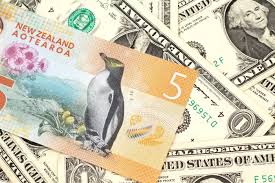On Tuesday, the Australian and New Zealand dollars faced renewed pressure after once again failing to break through key resistance levels. This decline came as global markets were reminded of the looming risk of a new round of U.S. tariffs, expected to take effect in just a few days.
Adding to the market’s concerns, U.S. President Donald Trump reiterated on Monday that the proposed tariffs on Mexico and Canada were still scheduled to be implemented next week. This announcement dampened investor optimism, as many had anticipated that ongoing negotiations might avert the imposition of these levies.

Both Australia and New Zealand, known for their open economies and reliance on resource exports, are particularly sensitive to shifts in global trade dynamics. As a result, their currencies are often vulnerable to the threat of escalating trade tensions, which could have broader implications for global economic stability. The prospect of a widening trade war continues to weigh heavily on investor sentiment, putting additional pressure on the Antipodean currencies.
The Australian dollar slipped by 0.1% to $0.6339 on Tuesday, retreating from an overnight high of $0.6392 and moving further away from the 100-day moving average, which stands at $0.6404. On the downside, immediate support for the currency is found at $0.6326, while resistance remains at $0.6415, signaling potential hurdles for any upward movement.
Similarly, the New Zealand dollar also experienced a decline, falling to $0.5725 after reaching a peak of $0.5769 on Monday. Technical analysis suggests support for the kiwi sits at $0.5675, with resistance levels marked at $0.5791, indicating the range within which the currency is currently trading.
Meanwhile, the focus within both domestic markets remains on the future direction of interest rates. This comes after the Reserve Bank of Australia (RBA) and the Reserve Bank of New Zealand (RBNZ) each implemented rate cuts last week, aiming to support economic growth amid ongoing global uncertainty.
Adding a positive note to the Australian economic outlook, an ANZ survey released on Tuesday revealed a notable rebound in consumer sentiment, reaching its highest level since mid-2022. The improvement in optimism was largely attributed to the recent easing of monetary policy, with respondents expressing greater confidence in both their personal financial situations and the broader economic environment.
However, while the boost in sentiment is encouraging, its potential impact on actual consumer spending remains uncertain. Should this newfound confidence translate into higher consumption, it could reduce the need for additional rate cuts in the future. For now, though, questions persist regarding whether improved sentiment will lead to sustained increases in consumer demand.
A key factor for the Reserve Bank of Australia (RBA) in the coming months will be whether core inflation continues its downward trend this quarter and moves back within the central bank’s target range of 2-3%. The upcoming consumer price index (CPI) report for January, set to be released on Wednesday, will offer some early insights into this trend.
Current forecasts suggest that the headline inflation rate may rise slightly to 2.6%. This anticipated increase is partly due to the expiration of government rebates on electricity, which had previously helped ease cost pressures on households.
However, it’s important to note that the initial CPI report for any given quarter tends to focus heavily on goods prices, offering limited insight into service-related inflation. Since services play a significant role in shaping the overall inflation picture, this limits the report’s immediate influence on monetary policy decisions.
That said, another subdued reading for the trimmed mean—a key measure of underlying inflation that excludes volatile price movements—would bolster hopes for a moderate inflation outcome for the entire quarter. The trimmed mean showed a sharp decline to 2.7% in December, raising expectations that price pressures might remain contained in the months ahead.
The full report for the first quarter won’t be available until late April, following the RBA’s next policy meeting on April 1. This timing is one reason why financial markets currently see little likelihood of another rate cut before May, as the central bank will likely wait for more comprehensive data before adjusting its monetary stance.
The Reserve Bank of New Zealand (RBNZ) has signaled its intention to lower its current cash rate of 3.75% in the coming months. The central bank has indicated that it is likely to implement two consecutive rate cuts of 25 basis points each, with the first expected in April and the second in May. Following these adjustments, the RBNZ is anticipated to pause further rate changes to assess the impact of its monetary policy on the broader economy. This approach reflects a cautious strategy aimed at supporting economic growth while keeping inflation under control.

